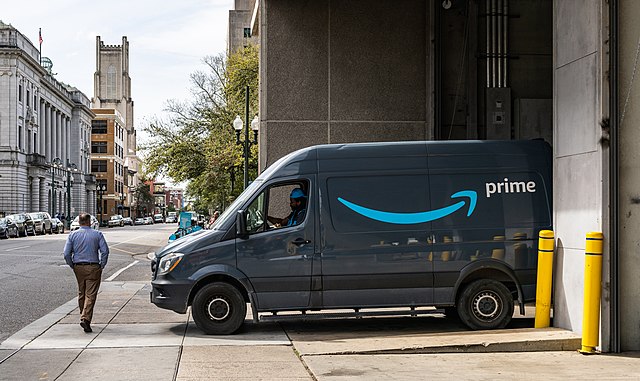This could be the greatest moment for organized labor in the twenty-five years I’ve been in the movement. I don’t have any insights into how or why the Amazon workers won in Staten Island, but it happened, and it’s making me wonder if things really are different for the labor movement, in the best possible way.
You bounce around the American labor movement as long as I have, and your one constant is that there’s always a false dawn. Always.
Back when I first got involved, it was the 1997 UPS strike over two-tier workforces. The strike was popular with the public and incredibly successful — for a while. Two years later, it was the WTO protests in Seattle. So much energy, so much at stake. These weren’t staged protests for fun; they meant something. Until 9/11 came around, and they faded into the rearview mirror. Even though people in the movement ended up on different sides, the split within the AFL-CIO in 2005 felt like it might be different. Everyone was talking about doing more organizing, on a bigger scale, better executed. Folks were so, so serious about a renewed commitment to organizing. Yet our slow decline continued.
The brief hopes of passing the Employee Free Choice Act in 2009. Occupy Wall Street. The Chicago Teachers Union strike in 2012. West Virginia, Arizona, and General Motors in 2018. There’s always a reason to be hopeful. And, let’s be clear, there have been great labor victories in the past 25 years. Real victories that have made life better for real people. But it’s two steps forward, one-to-three steps back. We gain a little ground; we lose a little ground. We win a strike; we lose a key union election. We get new labor rights in one state; we get Scott Walker in another.
Someone always wants to be the one to say, “This time is different!” This is the moment, the jumping-off point, the strike, the vote, the march that will turn everything around. But it’s never quite panned out. And while I cheer us on as much as I can, and take pride in the good that we do, I’m usually the curmudgeon. I point out how we don’t know what we’re doing or how we don’t learn from our mistakes. I’m a proud wet blanket of the labor movement.
But Thursday afternoon, as the vote totals from Staten Island came in, tears welled up unbidden in my eyes. I found myself returning to Rich Yeselson’s prediction from his 2013 classic, “Fortress Unionism.”
And then…wait. Wait for the workers to say they’ve had enough. When they demand in vast numbers collective solutions to their problems, seize upon that energy….
That is how massive union growth occurs—workers take matters into their own hands …. The workers risk their jobs, and sometimes even their lives, to form a union. It has happened this way all over the world. The workers will signal—loudly—when they want to organize.
Is this the signal we’ve been waiting for? Is this time different?
This wasn’t supposed to happen. There was no international union, no swarms of professional organizers. The Amazon workers in Staten Island just…organized themselves. Successfully. Quickly. They just did it.
To top it all off, there’s a real chance down at the Amazon facility in Bessemer, Alabama, too. Their election is going down to the challenged ballots. A result is weeks away. The stats on rerun elections are not encouraging, but the union is incredibly close and has run a vigorous campaign. If they win, it will be glorious.
We should all get out of the prediction business, but here’s one more: in the days to come, we’re likely to read and hear a lot of takes, especially from mainstream reporters and analysts not used to the labor beat, that condescend to the Staten Islanders or minimize what they did. The workers voted with their emotions (workers aren’t smart enough to make rational decisions). The vote was a surprise (this was luck! No skill or strategy involved). The pandemic drove them to the breaking point (because there was no way the workers made their own future; it was just an amazing confluence of circumstances).
I don’t have any inside details about how things went down on the ground in Staten Island. Indeed, those (like me) who weren’t part of the organizing drive may never get the whole story. The only thing I know for sure is that while a whole lot of factors made this win possible, one of those factors must have been smart strategy, determined organizing, careful planning, and perfect execution.
Think about what it’s like to face an anti-union campaign from a trillion-dollar corporation. Every second of every day inside that facility — for months. Signs on every spare inch of wall (and bathroom stall) space. Captive audience meetings daily or multiple times daily. Managers watching for the slightest infraction to scare you, to intimidate you. It breaks people.
We sometimes kid ourselves that you can beat an anti-union campaign by exposing the company’s lies. As if. The barefacedness of the lies is the point. We’re going to stand right next to you and spout fantastical lies again and again, they’re telling the workers, and you’re gonna have to stand there and take it. If you vote to form a union, this hell will never end. These anti-union campaigns don’t win by persuading the workers that a union is bad. They win by persuading the workers that the company is too powerful to stand up against, that you can’t win, that resistance is futile, and that none of this will go away unless the union does.
To win against that, well… I can’t even begin to imagine how they did it. Indeed, it’s not too much to say that the American economy is intentionally and explicitly designed so that victories like this can’t happen. For the last 40 years and more, the power of organized labor has been steadily and methodically eroded by politicians, corporate leaders, the mainstream media, and a union-busting industry with a can’t-miss playbook.
Workers in non-union shops can organize themselves, and do, but they usually only win when the workplace is small enough that everyone knows each other, and they have the solidarity of personal connection to carry them to victory. The Staten Island Amazon facility has thousands of workers, high turnover. The workers live all over the largest metropolis in the country.
It wasn’t just luck. It wasn’t just because the labor market is tighter than average. Past that, those of us who didn’t expect this can’t really say we know what happened, but an essential element had to be that the workers organized themselves with a level of competence and courage that beggars the imagination. They were good. You have to be good, be amazing, to win like they did.
Is this time different?
Cast your mind back to the last time that a workers’ organization, without formal support from any existing union, using only the resources they could crowdsource, built and won a campaign against this powerful an employer in this large a workplace, in a matter of months. Can’t think of a parallel? You’re not alone. This may very well be unprecedented.
This sort of thing doesn’t happen.
Except that it just did.
Is this time different?

